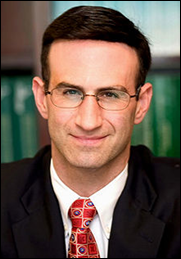News 6/11/09
From Skeptic: “Re: industry growth. We’ve been hearing the pundits predict 20-30% annual growth for the last 10 years. As of the end of last year, only 4% of physicians were using a fully functioning EMR. So maybe vendors are selling more and the market is ‘growing,’ but I am waiting for proof that physicians actually have the real tools they need to reach an adoption tipping point.” Meaningful use, perhaps?
From iPhone fan: “Re: upgrade to the 3GS. You said you just upgraded to the 3G model. Apple has a 30-day return policy so you should just take it back and get the new one.” I spent 20 minutes today holding on the phone to speak to someone at Apple about my options and finally hung up. Guess I am going to have to drag myself over the Apple store and ask one of the geniuses there. Meanwhile, other iPhone users are angrily blasting Apple about the unfair upgrade pricing.
Dr. Chris Rangel, who blogs at www.RangelMD.com, details an EMR disaster story that resulted in the loss of several months worth of medical records. The short version is his three-doctor practice bought an EMR and an in-house server. The selected EMR “looked good on the outside but was a pile of feces on the inside.” Training was inadequate and IT support was incompetent. Ultimately the practice lost data because the backup was set up incorrectly. Dr. Rangel is now using an on-line EMR, which he thinks is the way to go if you are in a small or medium sized practice. He suggests that the main reason some doctors “set up complex in-office software and hardware configurations” is because they want want maintain control. Says Rangel: “Having a stand alone system will make as much sense as building a minipower plant in your back yard to provide your home with electricity instead of taking it off the grid.” His piece is humorous, in a tragic sort of way. However, I think he falls short with his recommendation that using a Web-based solution is the automatic answer. Software can be “a pile of feces” whether it is an in-house or on-line solution. Both type vendors may provide poor training and support. Regardless of the infrastructure, make sure you do plenty of due diligence, including talking to current and former clients.
Peter Orszag, director of the Office of Management and Budget, shows strong support for HIT at a conference earlier this week. Orszag stresses the need for more information tied to medical systems so that doctors and hospitals know what works and whether additional procedures are warranted. He believes IT is a requirement for delivering the necessary data.
iMedica’s EMR/PM solution wins an endorsement from the Physicians’ Organization of the University Medical Center at Princeton, a PPO with 500+ physician members.
A former hospital employee is sentenced to a year in prison for her unauthorized access of the medical records of an AIDS patient who was feuding with one of the woman’s friends. She posted the information on her MySpace page. The woman was only 20 at the time, but it’s a pretty sad to think how many stupid (and mean) people are running around in this world.
Vermont strengthens its already tough stance on gifts to doctors from pharma and medical device firms. No more free lunches, as all meals and travel expenses are banned. Gifts to prescribers are no longer allowed and any payments to doctors – regardless of the amount – must be reported to the state.
The Southern California Orthopedic Institute selects SRS EMR for its 51 providers.
Former Eclipsys CFO Bob Colletti is named CFO for e-learning vendor Learn.com.
New Jersey-area HIT vendors claim EMR interest is surging. Businesses anticipate a positive economic impact by the end of the year as ARRA reimbursement details are finalized.
Another Kaiser Permanente employee (a nurse) is accused of wrongfully peeking into the medical records of her son’s second grade teacher. The nurse claimed the teacher said something derogatory to her son, her husband sent a letter to the school board claiming she was unfit to teach, and (according to a tipster) the nurse then pried into the teacher’s medical records. The teacher is suing the nurse and Kaiser, charging conspiracy, negligence, invasion of privacy, and emotional distress.
The use of electronic clipboards at the Iowa Clinic has reduced patient check-in time from nine to three minutes, according to the practice’s CEO. Patients update their information using a stylus and computer screen rather than a pen and paper. Administrators at the 140-physician practice also believe the new process has resulted in more complete patient data, especially insurance detail. Each tablet costs about $3,000.











Re: Walmart Health: Just had a great dental visit this morning, which was preceded by helpful reminders from Epic, and…